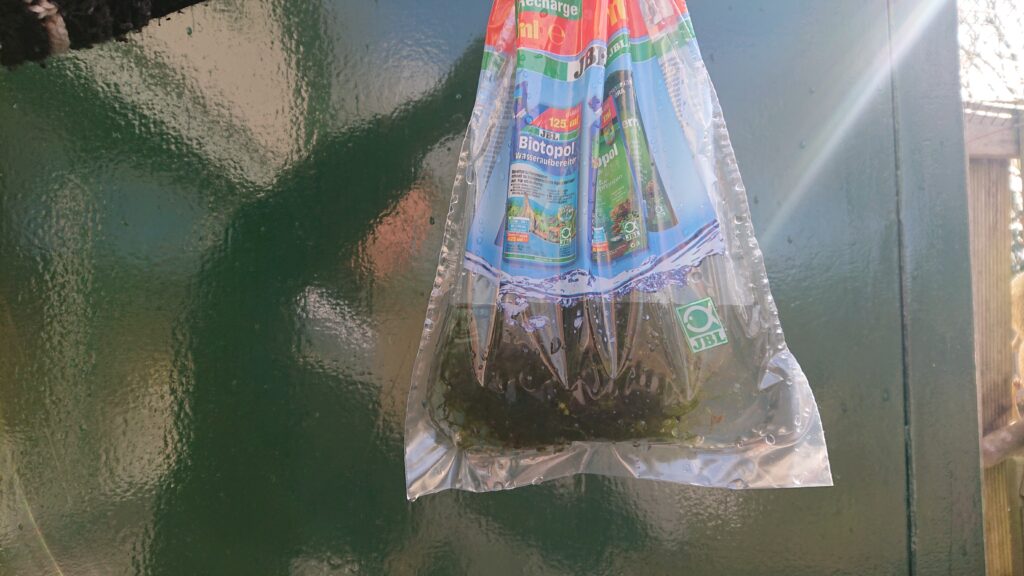Ghost shrimp are a great option for your aquarium if you’re a beginner or want a more low-maintenance species. They look cool, are inexpensive, readily available, can act as scavengers and feeders, and are relatively hardy. But just because they’re hardy doesn’t mean you don’t have to take care of them, especially when they’re in a bag.
Ghost shrimp can live in a bag for about two days. It’s possible to push this limit, but you may end up with unhealthy shrimp that won’t survive once introduced back into the tank.
Below, I’ll explain a little more about ghost shrimp, their preferred habitat, and how to keep them happy and healthy, even when putting them in a bag.
Ghost Shrimp Shouldn’t Stay in the Bag for More Than 2 Days
Plastic bags are far from the ideal habitat for ghost shrimp, but sometimes, it’s your only option. Tanks need cleaning and maintenance, or you need an easy way to transfer the shrimp, so you have to put them in bags temporarily.
Temporarily is the keyword there, as leaving shrimp in a bag too long can be hazardous to their health and potentially kill them. Ideally, a ghost shrimp’s habitat should have sand, live plants, and caves or crevices to hide in. Without these things, ghost shrimp can get very stressed out, which can damage their health.
Ghost shrimp also need their water to fit within certain parameters. In a bag, it’s much more difficult to monitor the water quality. And because there’s no filter, there’s nowhere for the shrimp’s waste to go.
The amount of time ghost shrimp are kept in a bag shouldn’t surpass two days, but that time can be less depending on how crowded they are in the bag. The more shrimp, the more waste is created. It causes the water to become uninhabitable much quicker.

Ghost Shrimp Are Known for Their Transparent Bodies
Sometimes Mother Nature gives us some fascinating animals, and many of the unique ones are marine animals. Enter the ghost shrimp, also called the glass shrimp, named for their transparent bodies. So transparent that you can see them digest food.
The term “ghost shrimp” is a general term for several different species within the genus Palaemonetes. These shrimp average about 1.5 inches (3.81 cm) tall, with the females often being slightly larger. The ghost shrimp sold in pet stores is usually one of the freshwater species found in the southeastern United States.
A Small Tank Is Enough for Your Ghost Shrimp
Because ghost shrimp are small, you don’t need a massive tank. A 5-gallon (22.7 L) tank like this Aqueon LED MiniBow Kit from Amazon.com, which has nearly a thousand five-star reviews, is good. It’s particularly great for small fish—and will be great for your ghost shrimp, too—and it comes with a filter.
As a general guideline, you want to keep no more than three or four shrimp per gallon of water. Make sure you set your tank up somewhere with a steady temperature and out of direct sunlight.
Add Live Plants to the Tank for Your Shrimp To Enjoy
Because the natural habitat of ghost fish is one with plants and crevices, that’s exactly what you want to put in your tank. Ghost shrimp prefer live plants, and hornwort, Cabomba, and java moss are great options. These plants, like the shrimp, are hardy and easy to find.
Having live plants in your aquarium not only offers hiding places for your ghost shrimp but creates a food source for them as they build up algae.
Ghost shrimp are burrowers and bottom feeders, but they also have very sensitive antennae. To keep them from getting injured, sand or fine gravel is the best choice. This Laden Namale Aquarium Sand from Amazon.com is a great choice because the sand is fine but not sharp, making it fantastic for shrimp or other burrowing animals.
Monitor the Tank’s Water Conditions
Ghost shrimp aren’t too picky about their water. The water should be between 65°F and 82°F (18.33–27.78°C). The pH should be close to neutral, between 7.0 and 8.0.
Ghost shrimp tend to prefer a light flow of water within their tank. Because they’re freshwater shrimp, you shouldn’t add them to a saltwater tank.
Do monitor the water quality. Certain minerals and heavy metals can be toxic to your shrimp. If you’re planning to use tap water, be sure to test it first. Copper and lead are common in water pipes but shouldn’t be present in your aquarium water. Similarly, you want the lowest amounts possible of ammonia and nitrites. Nitrates should be somewhere in the 5–10ppm range.
How To Acclimate Your Ghost Shrimp
While the ghost shrimp can survive a range of conditions, a sudden change in the water temperature or pH can be deadly. Don’t rush when moving your shrimp from their bag to the aquarium. The simplest method is to acclimate your shrimp to the aquarium water a little at a time.
Below are steps for acclimating your ghost shrimp:
- Ensure that the bag is room temperature and not too cold. Then, open the bag and let it float in the aquarium.
- Move ¼ of the water from the bag and replace it with water from the aquarium. You want to do this after about half an hour.
- Wait 15 minutes, then repeat.
- Give the shrimp another 15 minutes before using a net to move the shrimp from the bag into the aquarium.
Conclusion
Ghost shrimp are a popular choice for aquariums because they’re unique, inexpensive, and easy to maintain. However, it’s important to remember that they can’t thrive in a bag.
Ensuring that your ghost shrimp are in an aquarium that meets their needs is the best way to keep these clear crustaceans happy and healthy.
Sources
- PetSmart: Ghost Shrimp for Sale
- Fishkeeping World: Ghost Shrimp Care
- The Aquarium Guide: Ghost Shrimp: Complete Guide to Care, Breeding, Tank Size, and Disease
- Aquarium Info: Ghost Shrimp Care and Breeding
- AFC: How Long Do Ghost Shrimp Live?
- University of Wyoming Department of Physics & Astronomy: Ghost-Shrimp
Recent Posts
How Do Freshwater Shrimps Live? Freshwater shrimp are fascinating creatures that play a crucial role in aquatic ecosystems. They help maintain water quality by consuming algae and decomposing...
How Many Freshwater Shrimp Per Gallon? 4 Key Factors Freshwater shrimp are popular additions to aquariums, but many hobbyists wonder: how many shrimp can comfortably live in a gallon of water? The...

